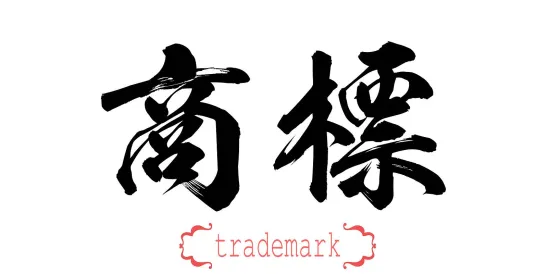On November 2, 2023, China’s National Intellectual Property Administration released the Guidelines on Subject Matter Eligibility of Utility Model Patents (关于实用新型专利保护客体判断的指引). Utility model patents (UMs) are one of the three types of patents in China, the others being design and invention (similar to U.S. utility patents). UMs do not undergo substantive examination and therefore tend to grant quickly. However, the subject matter of UMs is limited to the “shape, structure or combination of a product that is suitable for practical use” per Article 2, Paragraph 3 of the Patent Law. The newly released Guidelines go into detail of what this includes.
Excerpts follow:
If the preamble of the claim recites a method, it does not meet the subject matter eligibility of a utility model patent. For example, if the preamble recites a manufacturing method of gears, a dust removal method in a workshop, or a data processing method, etc. it is not subject matter eligible.
Even if the claim includes both improvements to the method itself and the shape and structural features of the product, it is still not the subject of utility model patent protection.
Taking into account the technical characteristics of the computer program, product claims involving computer programs that only include the name of a known computer program can be considered to be the object of utility model patent protection. For product claims that include both hardware improvements and computer programs, if the improvement to the prior art lies in the hardware part and the computer program involved is known, it can be considered to be the object of utility model patent protection; If the claim includes both improvements to the hardware and improvements to the computer program itself, it is not the subject of utility model patent protection.
Because utility model patents only protect products, claims that are formally written as products but essentially belong to the computer program module architecture category are not subject matter eligible because they only include program modules based on computer program flow.
Specifically, for example, the claim seeks protection for a facial recognition smart door lock. In order to solve the problem that traditional mechanical door locks cannot open the door if the key is forgotten, a technical means of automatic unlocking by facial recognition is adopted, which includes a hardware structure. The improvement also includes a computer program running in the processor module to implement facial recognition. If the facial recognition program is known and the claim does not involve improvements to the program itself, the claim can be considered to be subject matter eligible.
The shape of products without a definite shape, such as gaseous, liquid, powdery, or granular substances or materials, cannot be used as a shape feature for utility model protection.
According to Article 2, Paragraph 3 of the Patent Law, a utility model should be an improvement in the shape and/or structure of a product. The shape of a product refers to the definite spatial shape that the product has and can be observed from the outside. Product structure refers to the arrangement, organization, and interrelationship of the various components of the product… Mechanical structure, circuit structure, and composite layer structure belong to the structure of the product. The molecular structure, components, metallographic structure, etc. of substances are not the structure of products protected by utility model patents. For example, an electric welding rod that only changes the composition of the electrode coating is not the object of utility model patent protection.
Biological or naturally occurring shapes cannot be used as shape features of products. For example, the shapes formed by plant growth in bonsai, rockery shapes, etc.
A certain technical feature in a product is allowed to be a substance without a definite shape, such as gaseous, liquid, powdery, or granular substances, as long as its use in the product is limited by the structural features of the product, for example, the shape and construction of a thermometer and therefore subject matter eligible.
Circuit structure [may be subject matter eligible and] usually includes electrical circuits, gas circuits, hydraulic circuits, optical circuits, etc. The determined connection relationship between the various components of the circuit can be a wired connection or a wireless connection. For example, the structure of the circuit can be described according to the direction of the signal flow in the circuit: A carbon dioxide gas concentration sensor consists of a signal acquisition unit, a signal sampling unit, an amplification filter circuit and a shaping circuit, and is characterized by: The signal acquisition unit collects carbon dioxide in the air concentration signal, and then input the collected signal to the signal sampling unit, and then amplify the electrical signal through the amplification filter circuit, and filter the interference signal of power frequency and other frequencies by the filter circuit to obtain an effective carbon dioxide concentration signal, and then the signal is processed through the shaping circuit to obtain a square wave pulse signal.
The essence of determining whether a food application is subject matter eligible lies in whether it contains improvements to the material itself. If it contains improvements to the material itself, it is not subject matter eligible. For example, the claim claims a pastry consisting of three layers of cake and a seasoning layer sandwiched between each layer. The cake layers are made of flour, corn flour, and rice flour, and the seasoning layer is made of sweet seasoning and savory seasoning respectively. The problem it wants to solve is to improve the taste of the cake. Although it has the characteristics of a layered structure, solving the above problem must rely on the improvement of the selection or combination of cake layer materials and seasoning layer materials. Therefore, the claim essentially includes improvements to the material itself and is not subject matter eligible.
The technical solution mentioned in Article 2, Paragraph 3 of the Patent Law refers to the collection of technical means that make use of the laws of nature to solve the technical problem. Technical means are usually reflected by technical characteristics. Solutions that do not use technical means to solve technical problems to obtain technical effects that conform to the laws of nature are not the objects of utility model patent protection.
The shape of the product, the pattern and color of the surface, or the new combination of them, if they do not solve the technical problem, are not the subject of utility model patent protection. The words, symbols, diagrams on the surface of the product or the new combination of them are not the objects of utility model patent protection. For example, computer or mobile phone keyboards that only change the text and symbols on the surface of the keys; can openers decorated with the shapes of the twelve zodiac signs; chess and card games that only use surface pattern design as a distinguishing feature.
Patterns and colors on the surface of a product or new solutions for combining them do not solve technical problems and are not subject matter eligible. For example, the claim seeks protection for a Chinese-style raincoat with patterns of Chinese-style elements printed on appropriate locations where the raincoat can be worn. The purpose of setting patterns on the surface of the raincoat is to use the raincoat as a communication medium for traditional culture to express individuality and beauty. It does not solve technical problems and is not subject matter eligible. However, for example, the claim claims a safety raincoat, characterized in that fluorescent patterns are provided on the front and back of the raincoat. Through the warning effect of fluorescent patterns in low-light environments, the technical problem of improving pedestrian safety on rainy days is solved. This technical solution is subject matter eligible.
Plans to improve the shape of a product solely for the purpose of aesthetics do not solve technical problems and are not the subject of utility model patent protection. For example, a plan to make the appearance of a trash can into a panda shape for the sake of aesthetics is not subject matter eligible.
However, if the plan to improve the shape of the product is not only for the purpose of aesthetics, but also objectively uses technical means that conform to the laws of nature, solves technical problems, and produces technical effects, it can be considered to be subject matter eligible. For example, the streamlined car’s shape improvement not only has an aesthetic effect, but also better overcomes the wind resistance of the car during driving and solves technical problems. It can be considered subject matter eligible.
For patent protection of an invention, an appropriate patent type should be selected. Since utility model patents only protect products, technical solutions that essentially include improvements in methods/materials cannot be protected by utility model patents, so you may consider applying for an invention patent. For applications purely for aesthetic purposes, utility model patents cannot be used for protection. If they meet the relevant requirements for appearance design, you can consider applying for a design patent.
The full text is available here (Chinese only).



 />i
/>i

